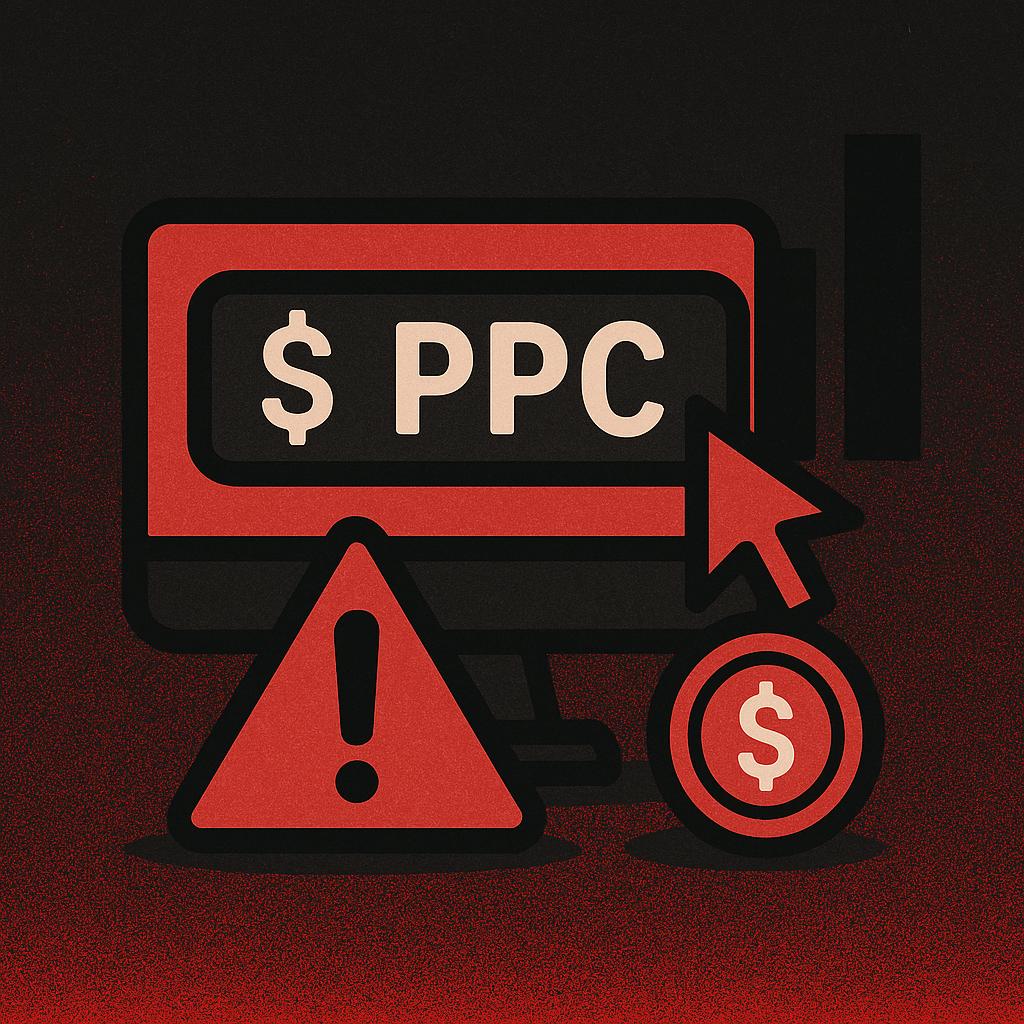PPC (Pay-Per-Click) advertising has become an essential tool for businesses in various industries, and the financial services sector is no exception. As competition in the financial market intensifies, leveraging PPC campaigns for the financial sector can increase visibility, generate quality leads, and drive conversions. However, running successful PPC campaigns for financial services comes with its own unique set of challenges and regulatory considerations. This article explores common pitfalls in PPC advertising for financial services businesses and offers practical solutions to avoid them.
The Unique Challenges of PPC for Financial Services
Why PPC is Particularly Important for Financial Services
The financial services industry is highly competitive. Financial institutions must not only differentiate themselves but also establish trust with potential customers. PPC advertising offers an immediate solution for businesses to increase their visibility and stand out in a crowded marketplace. However, financial services also come with the challenge of complex products and services that require clear communication, making PPC strategies crucial to success.
Specific Regulatory Challenges in Financial Advertising
One of the biggest hurdles in PPC advertising for financial services is navigating strict regulations. Financial companies are often bound by regulations such as the Truth in Lending Act (TILA), the General Data Protection Regulation (GDPR), and FINRA rules, which can heavily restrict ad content and targeting options. These regulations ensure that ads are transparent and not misleading but also add complexity to campaign management.
How PPC for Financial Services Differs from Other Industries
Unlike other industries, PPC advertising in finance requires compliance with industry-specific restrictions. For instance, certain keywords related to financial products (like “easy loan approval” or “guaranteed returns”) are often prohibited by advertising platforms. Additionally, ad approval processes in the financial sector are more stringent, requiring constant monitoring of compliance standards.
PPC for Financial Services: Common Pitfalls and How to Avoid Them
Failing to Define Clear Campaign Goals
One of the most common mistakes in PPC advertising for financial services is failing to set specific, measurable campaign goals. Whether your aim is to drive conversions, generate leads, or increase brand awareness, having clear objectives is essential.
The Importance of Setting Specific, Measurable Objectives for Each PPC Campaign
Without well-defined goals, it’s difficult to gauge the success of your PPC campaigns. Clear goals help you focus on what’s most important and ensure that you’re measuring the right metrics to assess performance.
Common Goal-Setting Mistakes: Focusing on Vanity Metrics Instead of ROI
Vanity metrics such as click-through rates (CTR) can be misleading if not aligned with your overall business goals. Instead, focus on ROI, lead conversion rates, and cost per acquisition (CPA) to evaluate the effectiveness of your campaigns.
How to Align Campaign Goals with Business Objectives and Customer Needs
By aligning your PPC campaign goals with business objectives—such as customer acquisition or lead nurturing—you ensure that your efforts are driving real value. Make sure to also consider customer needs when designing ads, as this will improve relevance and engagement.
Ignoring Proper Keyword Research
Choosing the right keywords is critical in any PPC campaign. In financial services, targeting irrelevant or overly competitive keywords can waste resources and fail to generate quality leads.
The Impact of Choosing Irrelevant or Overly Competitive Keywords
Irrelevant keywords often attract visitors who aren’t interested in your services, resulting in high bounce rates and wasted budget. Overly competitive keywords, while potentially offering high search volume, may lead to skyrocketing costs per click, without guaranteeing a return on investment.
Tips for Selecting the Right Keywords for Financial Services Campaigns
Focus on long-tail keywords that are specific to your services(but with a minimum volume). These typically face less competition and are more likely to convert. Additionally, use negative keywords to exclude irrelevant traffic that could drain your budget.
Tools and Techniques for Effective Keyword Research in PPC for Financial Services
Tools like Google Keyword Planner, SEMrush, or Ahrefs can help you identify relevant keywords with lower competition. Reviewing keyword performance will help you adjust your strategy and keep your campaigns efficient.
Not Segmenting Your Audience Properly
PPC campaigns that target a broad audience often waste ad spend. By focusing on the right segments, you can improve ad relevance and conversion rates.
Why Broad Targeting Can Lead to Wasted Spend in Financial Services PPC Campaigns
Broad targeting can attract a wide audience not specifically interested in your financial services. This leads to irrelevant clicks, higher bounce rates, and wasted budget.
The Importance of Audience Segmentation: Targeting by Demographics, Interests, Behaviors, and Financial Needs
Effective audience segmentation allows you to target specific groups based on their demographics, interests, and financial needs. For example, ads for personal loans should be tailored differently from ads promoting investment services.
How to Create Tailored Ads for Different Customer Segments
By creating targeted campaigns for specific customer groups (such as individuals seeking loans versus businesses looking for financial products), you can deliver ads that resonate with their needs and drive higher engagement.
Overlooking Ad Compliance and Regulatory Requirements
Financial services companies must ensure their PPC ads comply with regulatory guidelines to avoid penalties or ad rejections.
Key Regulations That Affect PPC Advertising in the Financial Sector
The financial services industry is heavily regulated, and non-compliance can result in ad rejection, penalties, or legal consequences. Regulations such as the Truth in Lending Act and FINRA rules govern how financial products can be advertised.
How Non-Compliance Can Result in Ad Rejection or Penalties
Advertising platforms like Google have strict guidelines regarding financial services ads. Ads that violate these guidelines, such as making exaggerated claims or failing to include necessary disclaimers, are at risk of being disapproved or flagged for review.
Best Practices for Ensuring Compliance in PPC Ads for Financial Services
To avoid compliance issues, always ensure that your ads are transparent and accurate. Include disclaimers where required, such as interest rates or eligibility criteria. Additionally, keep updated on industry regulations to stay compliant.
Financial services companies must ensure their PPC ads comply with regulatory guidelines to avoid penalties or ad rejections. Key Regulations That Affect PPC Advertising in the Financial Sector The financial services industry is heavily regulated, and non-compliance can result in ad rejection, penalties, or legal consequences. Regulations such as the Truth in Lending Act and FINRA rules govern how financial products can be advertised. How Non-Compliance Can Result in Ad Rejection or Penalties Advertising platforms like Google have strict guidelines regarding financial services ads. Ads that violate these guidelines, such as making exaggerated claims or failing to include necessary disclaimers, are at risk of being disapproved or flagged for review. Best Practices for Ensuring Compliance in PPC Ads for Financial Services To avoid compliance issues, always ensure that your ads are transparent and accurate. Include disclaimers where required, such as interest rates or eligibility criteria. Additionally, keep updated on industry regulations to stay compliant.
A disconnected or poorly designed landing page can hurt the performance of your PPC campaign.
How a Disconnected or Irrelevant Landing Page Can Hurt Your PPC Campaign Performance
If the landing page does not align with the ad’s message, it will lead to higher bounce rates and poor conversion rates. Visitors expect a seamless experience from ad click to conversion.
Best Practices for Creating High-Converting Financial Services Landing Pages
Your landing page should have clear messaging that directly addresses the visitor’s needs. It should also feature trust signals such as customer testimonials, certifications, and secure payment options. Ensure that the call-to-action (CTA) is prominently placed.
The Importance of Mobile Optimization for Financial Services Landing Pages
With a growing number of people browsing on mobile devices, it’s critical that your landing pages are optimized for mobile. A mobile-friendly landing page ensures a positive user experience, improving conversion rates.
A/B Testing Landing Pages to Improve Conversion Rates
Use A/B testing to experiment with different elements of your landing page, such as headlines, CTAs, and design. Testing allows you to find the version that converts the best.
Inadequate Budget Management and Bidding Strategies
Setting an unrealistic budget or choosing the wrong bidding strategy can negatively impact your PPC campaign performance.
Why Setting an Unrealistic Budget Can Lead to Poor Results in PPC for Financial Services
An overly aggressive budget may deplete resources without yielding a positive return. On the other hand, a low budget may limit your ability to compete for high-value keywords.
How to Allocate Your Budget Based on Your Campaign’s Goals and the Financial Service’s Value
Ensure your budget aligns with the value of the service you’re offering. Higher-value services like business loans may warrant a larger budget, while personal finance ads might require less.
Choosing the Right Bidding Strategy: Manual vs. Automated Bidding
Manual bidding allows for greater control, but it can be time-consuming. Automated bidding, powered by AI, can adjust bids in real time to optimize performance, saving time and improving results.
Tips for Optimizing Bids for High-Value Keywords Without Overspending
Monitor your campaigns closely to ensure you’re bidding efficiently. Use bid adjustments to increase bids for high-performing keywords and decrease them for underperforming ones.
Failing to Track and Measure Key Metrics
Tracking the proper metrics is crucial to optimizing your PPC campaigns and ensuring you get the best ROI.
The Essential Metrics to Track for PPC Campaigns in Financial Services
Key metrics include CTR, conversion rate, cost per acquisition (CPA), and return on ad spend (ROAS). These metrics help determine the effectiveness of your PPC strategy.
How to Set Up Proper Tracking and Analytics for Your Campaigns
Use tools like Google Analytics or Google Ads conversion tracking to measure campaign performance. Proper tracking ensures that you’re gathering accurate data for analysis.
The Role of Google Analytics and Other PPC Tools in Tracking PPC Performance for Financial Services
Google Analytics and other PPC tools allow you to monitor the performance of your campaigns, identify bottlenecks, and optimize strategies for better results.
How to Analyze and Optimize Campaigns Based on Data Insights
Use data insights to refine your PPC campaigns continually. Adjust bids, optimize keywords, and tweak ad copy based on performance data to improve overall campaign results.
Lack of Ongoing Campaign Optimization and Testing
Continuous optimization is key to long-term PPC success.
The Importance of Continuous Optimization in PPC Campaigns for Financial Services
PPC campaigns for financial services require ongoing optimization to stay competitive. Without regular tweaks, campaigns can become outdated or underperform.
How to Test Different Ad Copy, Landing Pages, and Audience Targeting Strategies
A/B testing allows you to experiment with different elements of your campaigns. Regular testing of ad copy, landing pages, and targeting strategies ensures you continuously improve results.
The Role of A/B Testing and Multivariate Testing in Improving Campaign Performance
A/B and multivariate testing allow you to test various versions of your ads and landing pages. This testing helps identify which combinations yield the best results.
Adjusting Campaigns Based on Performance Data to Reduce Wasted Spend and Increase Conversions
Regularly analyze your campaign data and make adjustments to ensure your ad spend is directed toward the most effective strategies.
Best Practices for Effective PPC for Financial Services Campaigns
Crafting Effective Ad Copy for Financial Services
Effective ad copy is clear, compelling, and compliant with industry regulations. Use strong CTAs and focus on selling points that resonate with financial service customers, such as low rates, high security, or personalized service.
Optimizing PPC Campaigns for Different Platforms
Different platforms, such as Google Ads, Bing Ads, and social media, require unique strategies. Tailor your financial services ads to each platform’s audience and features for maximum impact.
Leveraging Automation and AI for PPC Campaigns
Automation and AI can optimize PPC campaigns by adjusting bids, keywords, and targeting strategies in real time. AI helps scale campaigns effectively while minimizing manual effort.
Case Studies: Successful PPC Campaigns in Financial Services
An in-depth analysis of successful PPC campaigns in the financial services industry reveals the strategies and techniques that led to high performance. By learning from these case studies, you can apply similar strategies to your own campaigns for better results.
The Future of PPC for Financial Services: Trends and Innovations
Emerging Trends in PPC for Financial Services
The future of PPC advertising in financial services will be shaped by emerging trends such as voice search, AI-driven bidding, and changes in consumer behavior.
How Changes in Consumer Behavior Are Shaping the Future of Financial Services PPC
As consumers become more tech-savvy, they expect personalized, immediate responses to their financial needs. This shift is driving changes in how financial services companies approach PPC advertising.
Preparing for the Future: Adapting to New Technologies and Regulatory Changes
To stay competitive, financial services companies must adapt to new technologies, regulatory changes, and consumer expectations. Staying ahead of these trends will ensure continued PPC success.
Conclusion
PPC advertising is a powerful tool for financial services companies looking to increase visibility and drive conversions. By avoiding common pitfalls, such as failing to define clear goals, neglecting keyword research, and overlooking compliance requirements, you can optimize your campaigns for better performance. Regularly evaluating and refining your PPC strategy will help ensure that you remain competitive in the ever-evolving financial services market.

 Amazon Marketing
Amazon Marketing


